|
The theme for #52Ancestors this week is Help and once again I can’t think of an ancestor that fits this theme. But one of the greatest helps to me in my family history research that I have recently been using a lot is the British Newspapers on Findmypast. In a previous blog I wrote about the newspaper reports about the Pilbeam siblings’s marriages and in another blog about the suicide of Ruth Sturt’s second husband. But that is not all I’ve found about my ancestors in newspapers. In 1928 I have a report of a Sunday School Treat that was held at Rushford Farm by Mr Pilbeam who was the Superintendent. That would be George Charles Pilbeam, my great grandfather. It mentions all the helpers and the children who won the races including Girls Flat race (under 7’s) won by Joan Pilbeam, his daughter. The other children include some well known names from the area; Porter, Fox, Funnell and Cornford. This article helps to put my family into the wider context, possible other members of the Brethren Chapel they belonged to and who were their friends. On 27 March 1855 in the Sussex Advertiser and Surrey Gazette there is a report of housebreaking in Warbleton in amongst reports from Constantinople and Balaclava and reports of what the royals were up to. This gives me a picture of what was going on in the world on this date. One Thomas Clout was taken before George Darby accused of breaking and entering the house of Jesse Oliver of Warbleton. He stole 7lbs cheese, 2 1/2 lbs butter, five loaves of bread and a pair of Cossack boots. Joseph Oliver his son was also interviewed. This Jesse is likely to be my great x4 great uncle and his son who were living at Rushlake Green. The boots produced at the hearing were identified as the ones in question by the pad made out of an old hat put in the bottom by Joseph who was the owner. I also have a number of newspaper reports of poultry show winners which include the Oliver family; 17 November 1866, Shoreham Poultry Show. Joseph Oliver of Warbleton was commended for Ducks, class 24, for the best drake and duck of any age. Sussex Advertiser. 17 August 1867, Hastings and St Leonards Poultry Show. Joseph Oliver won highly commended and commended for White Aylesbury Ducks. Sussex Advertiser. This is during a time when Warbleton was at the centre of a local Chicken Cramming industry and Jesse and Joseph were both Higlers on the 1861 census, so presumably involved in carrying the poultry to the station at Heathfield once they had collected them from the farms where they were fattened.
In the Sussex Advertiser on 15 September 1866 there is the report of an inquest held into the sad death of Stephen Oliver, son of Hannah Oliver. His death was caused by a fall over a hedge whilst in a state of intoxication. He had spent the previous afternoon at the Horse and Groom, Rushlake Green with a farmer, Thomas Hayward, and was known to him for 25 years. They were both a little drunk by the time they left the pub. They had gone back to Hayward’s house before Oliver eventually left for his own home, across the fields. The surgeon reported he found a slight mark on his forehead, he had fallen in a field on his way home in the dark. He was of the opinion he had died of concussion. Jury returned the verdict he died of concussion caused by a fall while intoxicated. The Coroner remarked that this sad affair might have been averted had the witness, Hayward seen him home instead of letting him go alone in the dark. Just from those few examples I have learnt valuable information about my ancestors, their lives and the places they lived. I have a lot more families to search for so more research needed.
1 Comment
The theme for this week’s #52Ancestors is Teams. I don’t have any famous team players in my family, or even infamous ones. As I was struggling about this week’s subject I realised that every team, football teams anyway, have 11 members. How many families do I have on my tree that are a team with 11 members? I have 42 families that had 9 children, mostly those of the 19th century but some in the 18th century too and most were agricultural labouring families in Sussex. I decided to pick one such family to look more closely at. I picked my Great x4 grandfather George Pilbeam and his first wife, Anne Weston. George Pilbeam was born in 1784 baptised on 10 November 1784. His parents were Thomas Pilbeam and Hannah Eastwood and Thomas was a Shoemaker in Burwash. There were many families of Pilbeams in Burwash at that time and George would have grown up with many cousins from both sides, the Eastwoods were numerous in Burwash too. Anne Weston was born 1783, baptised on 3 February 1783 also in Burwash. Her parents were John Weston and Ann Mabb. In 1806, Ann gave birth to a baby girl, Celia who was baptised at Burwash on 26 July 1806. George and Anne were married on 21 November 1807 in Burwash Church. George left his mark but Ann signed the register witnessed by Hannah Pilbeam and Barbara Weston. Barbara was likely to be Anne’s sister. The children born to George and Ann were: Hannah baptised 18 April 1808 at Burwash George baptised on 1 July 1810 at Burwash James, my great x3 grandfather, was baptised at Burwash on 2 February 1812 and married Sarah Simmons John baptised 22 Jan 1814 at Burwash, and died in March 1820 William baptised on 11 June 1815 at Burwash, William married Mary Ann Isted and they farmed at Brickells Farm in Hellingly near Hailsham. Ann baptised on 22 March 1818 at Burwash and died November 1836 Harriet was baptised at Burwash on 15 October 1820. Harriet married Thomas Simmons who was brother of Sarah Simmons. Thomas was baptised on 4 May 1823 at Burwash and lastly Robert was baptised at Burwash on 8 January 1826. George is recorded from the 1813 onward baptisms as a Labourer, presumably an Agricultural Labourer as by 1841 (as we know from my previous blog dated 22 February 2022 about George my Landed Ancestor) he was a Farmer. It looks very much as if he worked his way up and ended up renting Battenhurst Farm near Ticehurst with 120 acres according to the 1851 census.
I’ve not yet found out exactly when George moved to Woodsell where he was farming in 1841. Woodsell is at Dallington, down the road from Burwash and we know he was there in 1840 when Anne died, as she was buried at Burwash although her abode was noted as Dallington. I imagine him farming alongside at least some of his children. At least 4 of his sons, George, James, Thomas and William followed in his footsteps and on various census returns are found farming in different parts of the area. I imagine some of the girls living at home till they married and helping on the farm too, it would have been all hands on deck at certain times of the year. What of Celia, Anne’s illegitimate child? It looks like she was an accepted member of the team, the 1841, 1851 census have her living with George even after her mother’s early death. In 1861 after George’s death she is in Peasmarsh and marked as a confirmed Invalid. She died in 1864 and was buried as Celia Pilbeam in Burwash. Robert, the youngest child died in 1860 leaving no wife or issue. Most of the other children married and had large families of their own, mostly farming and staying in the area. Another family for my ‘more research needed’ pile. I have not managed to find a marriage for either Hannah or George the two oldest children yet. This week’s theme for #52Ancestors is Fun Facts. A few years ago there was a brilliant website online for genealogists with some useful apps called Twile. You uploaded your family tree and the app created the below graphic with lots of fun facts about your family history. Mine is slightly out of date and unfortunately I can’t renew it as the website sadly does not exist anymore. Shame! I was surprised to see that it is almost balanced between men and women although not surprised that I have slightly more women on the tree. Some of the other figures left me feeling very surprised, 2 5/7 average number of children? That seems quite low when you think about how many families in the 18th and 19th centuries had lots of children. But it takes into consideration that many families on my tree have not had their children searched for yet. Research to follow! In fact I had a look at my family tree and discovered I have one family that had 16 children. Imagine that, 16 children?! There are 27 families with between 12 and 16 children. Of course not all those children survived to adulthood. What about 25 being the average age for marriage. That’s seems a little old to me but apparently the perception that people married a lot younger in those days is not generally true. I was once told by another genealogist that it was not unusual for girls under 16 to marry and to marry much older man. Again the only girls under 16 marrying on my tree are obviously errors from trees I picked up in the early days and because they are side branches, I’ve not checked them yet. I found one couple this morning on my tree who apparently married at 112 and 115, I found the marriage, the date was wrong they were in their early 20s when they married. Date corrected. Another stat which I find odd and is probably down to the amount of people on my tree where I need to search for and add the death date, is the average age of death being 49. Many of my ancestors lived to a ripe old age. The oldest was my great great grandmother Phillis Funnell who died at the age of 98. I have 36 ancestors who died over the age of 90, not bad for a bunch of agricultural labourers. I am sure there are more to add to that number once their deaths are found and added to the tree.
Here’s an interesting fact, nobody on my tree was born on Christmas Day, 6 were born on New Year’s Day and 4 on Valentine’s Day. There was also two others born on my birthday 17 February, strangely they were siblings, born 9 years apart. I also had two forebears who were born on 29 February. I’ve just found out by visiting my tree on Ancestry and by using their Anniversaries that 133 years ago today, my great great grandparents James Cruse and Alice Rhoades were married. What other fun facts would you be interested in finding out about your own family tree? The theme this week for #52Ancestors is Characters. Another theme I have struggled with, I don’t have any actors in my tree or any one story that speaks louder to me than anyone else’s. I thought therefore I would write about my Great x2 Grandfather, William Pilbeam. He is the ancestor I use when I want to shock someone! Tee hee, he was a Chicken Crammer! William Pilbeam was born on 4 April 1849 to James and Sarah Pilbeam and he was born in Warbleton. The 1851 census had them living at Rushlake Green and James was a Dairyman. Farming was in the blood. By 1871 William and his widowed mother had moved to Little Rigford Farm, now known as Rushford Farm at Three Cups near Punnetts Town. Sarah was described as a Farmer of 20 acres and William was a gardener. I presume he was helping his mother with the farm. Also living with Sarah was her unmarried daughter, Emily, 23 and her daughter Harriet and her husband James Martin. They went on to farm Ebenezer Farm in Punnetts Town. By the 1881 census William was farming at Little Rigford Farm. At 20 acres it was a small farm and as we saw from the later MAF document in the blog post about George Pilbeam, it was a mixed farm and imagine was subsistence farming. George was one of William’s sons. In 1891 the farm has now become Rushford Farm and William is described on the census return as a Chicken Fattener. Poultry farming was especially suited to small farms because of the level of skill and supervision required. The farmers organised themselves into two groups, rearing and fattening. Chickens reared on one farm were sent to a fattener who force fed them using a locally invented machine - the crammer, and after killing and preparation sent to London markets by train from Heathfield. In 1893 two years after the census an estimated 1 million birds were sent to London by train from Heathfield. For a short period of time the chicken cramming would have added to the income of failing Wealden farms in place where the landscape leant itself to subsistence farming. The topography meant that fields were small and hilly which gives the Weald its character. Chicken cramming was quite lucrative in the Warbleton area and for a time gave substantial employment, for instance the 1891 census shows 19 employees within a 3 mile radius of Rushford Farm were involved in the business. I have looked at the census returns from 1851 to 1911 and charted the industry in terms of people involved and there is a definite peak around 1891. The 1901 census described William as just a farmer but my feeling is that as the cramming was going on all around him he was still involved and then the 1911 census he has written Farmer and Poultry Fattener. Poultry Fattener is crossed out. Someone didn’t want to advertise the fact he was involved maybe although I do recognise that attitudes to what is seen, today, as a barbaric practice was not seen in the same light at that time, or was it?
William died in 1919 and George, son described himself on the 1921 census as a Farmer with his widowed mother. Again the MAF form only mentions 17 fowl, so hardly a chicken cramming business by the beginning of WW2. The industry had largely died out by the 1950s although I know people today have memories of chicken sheds around Punnetts Town. There was a number of them across the road from my grandparents house where Granny would take us to buy eggs from Mrs Lower, while on childhood holidays. Apparently if you know what to look for there are relics and signs of the industry everywhere! This week’s theme for #52Ancesors is Extended Family and I’m going to write about David Smith. He married Emily Smith Harmer, the oldest sister of my great grandmother Dorothy Harmer (see last week’s blog re the passport). David and Emily became foster parents to my grandmother Ivy and I have recently been looking at his family. For the first time in 20 years of family history I have at last found a family with roots in Hailsham, my home town. We’ve only been here since the early 1900s when my great grandfather Reuben Baldwin came here. But at least one of David Smith’s grandparent lines were in Hailsham in the early 1800s and possibly further back than that. David Smith was born in 1877 to Samson and Ruth Priscilla Sturt. Samson was a Carpenter and they were living in Vines Road. He was one of seven children all born in Hailsham. David joined the 3rd Royal Sussex Regiment in 1893 in Eastbourne at the age of 17 and on his Attestation was described as 5 ft 3 1/4 ins tall, he had dark grey eyes and dark brown hair. His mother Ruth lived at 1 Garfield Road, Hailsham. His father had died in 1892. From then on, his life can be pieced together by a number of newspaper reports I have found either with him mentioned or written about him. By 1913 his involvement with Hailsham Fire Service had started. There is a report in the Sussex Express, Sussex Standard and Kent Mail dated Friday 27 June 1913 stating David Smith and another young fireman were both presented with a handsome clock and a set of spoons as an expression of appreciation on the occasion of their recent marriages. Both firemen spoke in reply and thanked the Brigade members on behalf of themselves and their respective wives. On Friday 6 November 1914, in the Sussex Express a Roll of Honour was published of all the young men of Hailsham who had gone to fight for Old England and David Smith of the Royal Sussex was amongst them. In 1915 he was wounded, the Hastings and St Leonards Observer on the 16 January 1915 have a report from Dallington that Private David Smith of the 2nd Royal Sussex, who was seriously wounded in the fighting around Ypres, had been visiting his father in law, James Harmer of Battle Road. Smith said he was close enough to identify the man who had shot him. My dad says that the story was he received shrapnel in the cheek. The next mention of him is again in the Sussex Express in July 1918 when he appeared at the Coroners Court to corroborate the story of his mother Ruth in the sad tale of her second husband, George Fox’s suicide. It appears that Ruth of 17 Garfield Road had been at Stone Cross, looking after her dying stepson for two days. Her husband who was 80 was described as very childish lately and upset at his son’s health. The son died that night and when Ruth returned home and told George, he took himself outside, it was the middle of the night. The next morning his body was found in the Common Pond. It appeared that David had searched for him and presumably had found him and he informed the Police. It looked like he had attempted to cut his throat before drowning in the pond. The jury returned the verdict of Suicide whilst of unsound mind due to changes of old age. The next mention of David is a photo that was taken of four firemen in the aftermath of a shop fire in the High Street, Hailsham in 1928. David was the second on the left. Mention of this fire ended up in the Daily Mirror and was headed ‘Fire Fighting from a Graveyard – shop destroyed’. Eastbourne Fire Brigade had apparently dashed through the fog to help. Goods were removed from adjoining shops and beer from a nearby Public House. The photo appeared in a book of old photos of Hailsham and David was unnamed, but my granny had recognised him and I wrote his name on my copy of the book. David died in 1930 at the age of 53 and his death was reported in the local paper, Eastbourne Chronicle dated 28 August. It reads ‘Death of a Hailsham Worthy, an Honourable War Record’.
‘Hailsham has lost a worthy and much respected citizen by the death, after a brief illness, of Mr David Smith, aged 53 of 19 Garfield Road, whose funeral on Saturday excited considerable interest.’ It reports how he had 13 years of Army service in India, and he gained a Military Medal in 1918 for bravery in the field. A medal which my dad has along with the Indian Frontier Medal. Twice wounded he was discharged in 1917 and he underwent an operation to remove a large piece of shrapnel from his tongue. So the rumour dad had been told was true. His many useful activities in Hailsham included being an auxiliary Postman, he was a member of the Hailsham Fire Brigade, Scoutmaster, and many of the bodies he was involved with were represented at the funeral. His body was borne in a coffin draped with the Union Jack and carried on the town fire engine to be buried at the Cemetery in Ersham Road. I am amazed at just how much information and clues have been gained by searching newspapers for the story of his life. It gives me lots of clues to records that I should now search for to find out more about his life. The theme for #52Ancestors is Identity. Recently I found on Ancestry the Passport Application for my great grandmother Dorothy Gladys Harmer, or as she was when she applied for her passport, Dorothy Gladys Marini. She married John Marini on 11 September 1918 at Dallington Church, across the road from the cottage (Yew Tree Cottage now Staces) her place of residence was with her parents, James and Helena (Lorraine) Harmer and no doubt some of her many siblings. The family had not lived there long, for the 1911 census they were in Woods Corner. John Marini was 31 and Dorothy was 26. His place of residence at the time of the marriage was 16th Canadian General Hospital, Orpington, Kent and he was a Bandsman, 211th Battalion, American Legion of Canada. Presumably John had been sent back from Northern France. John’s father was Caesar Antonio Marini, a Shoemaker. He had emigrated from Italy to Canada in the 1880s. Dorothy’s father was a Tree Feller. John and Dorothy both signed the register and James was one of the witnesses and left his mark. The next part of the story is an application in the US for a passport from John Marini in 1919. It gives a lot of information about him. He lived in Pennsylvania and he had been born in Firli Del Sannio, Italy on 23 November 1886. I think that should actually be Forli Del Sannio, the form typist mistranscribed. It is described as ‘the small centre is located in the heart of the Apennines, in a mountainous area crossed by the Vandrella river, that originates in the north-west at the "Bocche di Forlì" and further on flows into the Vandra, a tributary of the Volturno.’ His family emigrated in 1886 and he was naturalised in 1895. He lived for 32 uninterrupted years in the US until 1915 when presumably he headed for France. He stated that his wife was in England and he wanted to bring her to the US after seeing that her mother was properly cared for and his wife’s affairs settled. One of those affairs was presumably my grandmother who had been born in 1913 and was left behind with Dorothy’s older sister Emily. Then a year later on 30 August 1920 there is an application for passport from Dorothy applied for at the American embassy in London. It is an emergency passport for a person claiming citizenship through naturalisation of husband. It says she was born in Dallington, Sussex on 21 May 1894 and her husband John Marini emigrated from Italy to the US in 1887. He was naturalised in Pittsburg, Pennsylvania in 1895 and was currently in London awaiting embarkation. They were going to live in New Kensington, Pennsylvania and she wanted to join him.
Dorothy appeared with John on the list of United States Citizens on the SS Olympic which sailed from Southampton on 29 September 1920 arriving New York in October 1920. They returned to England on a number of occasions over the years including the 1970s when I met them as a child. Dad ferried them around in his car and I think we took them to see Jack Fuller’s Follies. It is amazing how much information can be gleaned from just three documents, if only we read them carefully enough. Sometimes we download a document for a specific bit of information, ie a date of birth or place of birth and miss all the other bits of useful information. From John’s passport application I now have enough information to try and search for his birth; his father’s name, place of birth and even his birth date. More research then….. |
AuthorKerry Baldwin Archives
June 2023
Categories |
|
Copyright Kerry Baldwin 2024
|
Proudly powered by Weebly
|
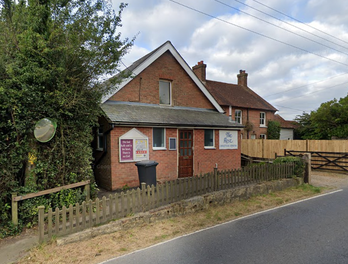

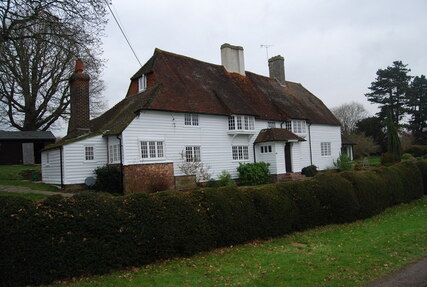




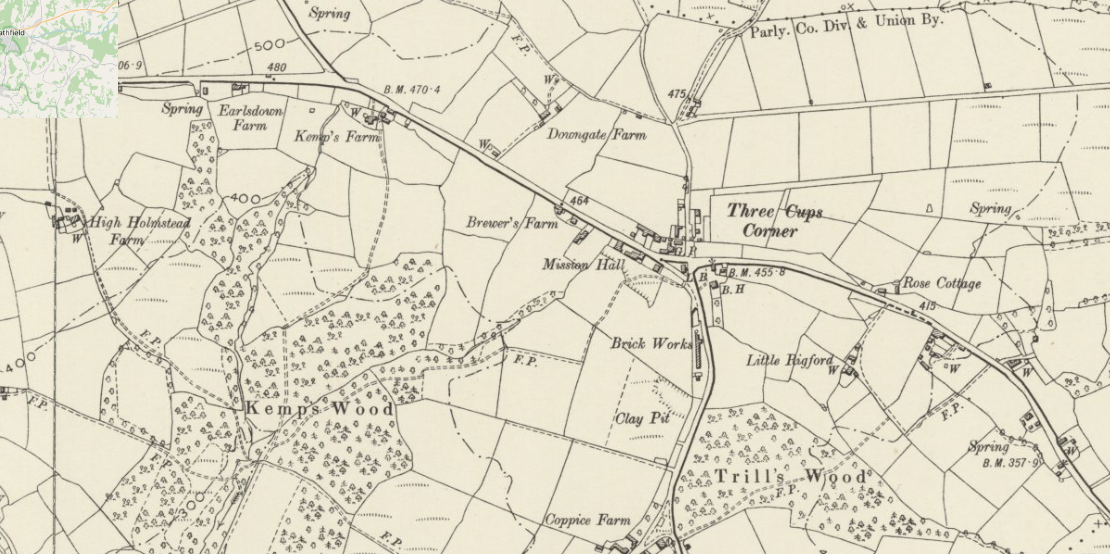


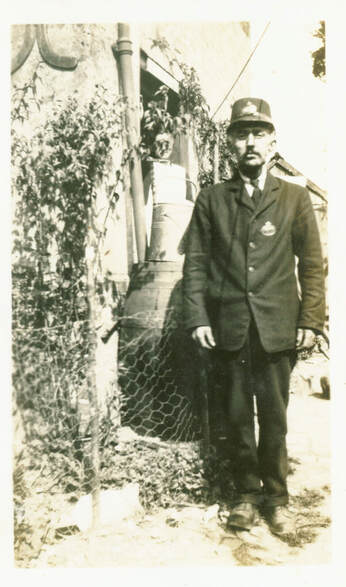

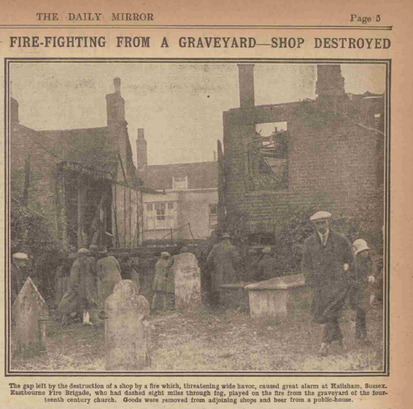
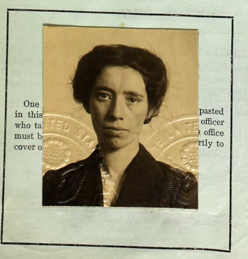
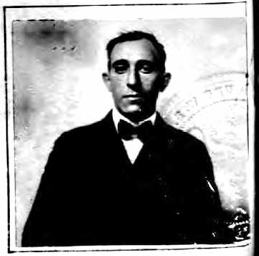
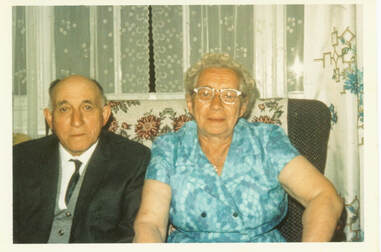
 RSS Feed
RSS Feed
